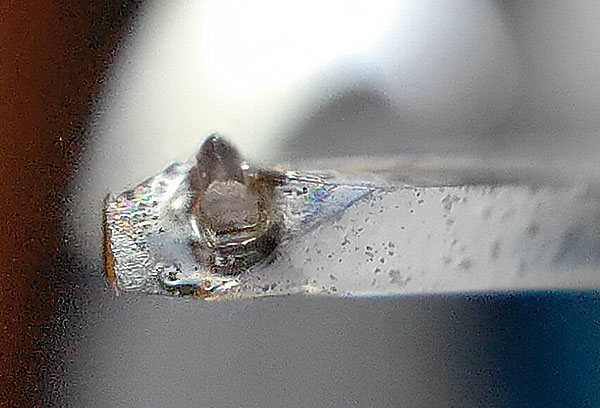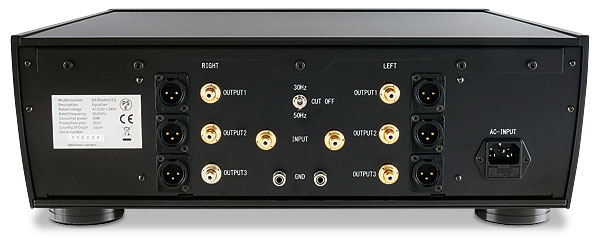DS Audio Master 3 Cartridge Page 2
![]() Maiden Voyage
Maiden Voyage
Nothing readied me for the initial impact of the first track I played with the Master 3 – I am still trying to grasp the significance of both the bottomless reaches of the bass extension and the scale of the soundstage. I simply was not prepared for such audible gains over every cartridge in my arsenal.
Compiled by Analogue Productions in 2008, the triple LP anthology Thorens 125th Anniversary [ATD135] features Rimsky-Korsakov's 'Dance Of The Tumblers' from The Snow Maiden, performed by Eiji Oue and the Minnesota Orchestra. So bombastic was the initial impact that I was at first tempted to attribute it to greater playback levels provided by the Master 3's higher output.

What led to this conclusion was that I had changed from the Grand Master to the Master 3 without touching the volume settings. But even after matching them, there was still a far greater sensation of mass, scale and perceived level via the Master 3. This is usually what I would attribute to going from a little two-way speaker to a woofer-filled floorstander. It's not something I ever expected from a cartridge, and certainly not from one model to another within the same family – even with the aforementioned improvements. As far as conveying the visceral presence of an orchestra, this cartridge has few if any equals.
Smooth Grooves
But that's only part of the picture. What really took me back was its cosseting silkiness. DS Audio cartridges rarely sound as romantic as, say, an Ortofon SPU. Absolute transparency is the family trait, yet the Master 3 is the cashmere dressing gown of cartridges. The warmth and richness all but defies the super-costly Grand Master EX flagship, which by comparison is on the cooler side in the Venn diagram of sonic textures.
Deservedly praised, the £18,995 Grand Master EX remains an exceptional device, its one-piece cantilever/stylus assembly eliminating any minor deviations due to movement at the bonded stylus junction. And yet the Master 3's bonded stylus/square-section cantilever had all of the EX's precision but without any trace of the clinical. It was as if someone wanted to grace a cartridge with the warmth of a Western Electric 300B triode while at the same time giving it the slam and control in the lower registers that one might only attribute to an unburstable solid-state powerhouse such as the D'Agostino Relentless [HFN Mar '20].

Staying with live music, I wanted to sample the other end of the scale, with a reduction in the size of the soundstage and the number of instruments. Art Farmer's Portrait Of... [Craft Recordings CR00605] rewarded with life-sized performers in a convincing approximation of a studio, as if my listening room had changed dimensions.
Aside from live events, I cannot recall ever hearing brass with such punch, clarity and attack. The piano was so authentic I had to tap a few keys on the real one in our lounge. Had time allowed, I would have used the Master 3 to re-acquaint myself with my entire Miles Davis collection and the new pressing of Keith Jarrett's 1973 solo concerts in Bremen and Lausanne, but instead I moved to vocals of unrivalled power.
Taking It All In
Etta James is perhaps the greatest R&B singer of all time, but her 1978 set Deep In The Night [Pure Pleasure PPAN BSK3156] was criminally lost in the shuffle. Admittedly, purists might have been upset by the inclusion of a number of rock covers, but what she did with The Eagles' 'Take It To The Limit' and a peerless reading of 'Piece Of My Heart' to rank with Joplin's – well, let's just say that the Master 3 ensured that I played the entire album all the way through instead of cherry-picking the tracks.

This LP showed how the cartridge could handle emotion and vocal range. Rising to the occasion, it delivered Etta's forcefulness so successfully that you soon forget the oft-heard Eagles version. That alone rendered the Master 3 an 'event component'. But what shook me, again, was the spatial display when the chorus emerged behind her in 'Take It To the Limit'. This was simply positioning so realistic that it made me think that the 'semi-flagship' Master 3 is as close to flawless as any cartridge I've heard.
Hi-Fi News Verdict
Every range has its sweet spot, and the Master 3 is certainly that for DS Audio – even with its costly matching equaliser. But pair it with one of the less pricey equalisers and you have not just a bargain, but one of the best-sounding cartridges money can buy. You get the soundstage of a Denon DL-103, the excitement of a Decca, tracking to worry a Shure V15 and the warmth of a Koetsu. It's a blessed miracle.
























































